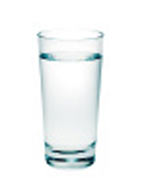
In 2003 the United Nations report on the state of the
world's fresh water warned “that decreasing water supplies could lead to
epidemics and international conflict”. A new report will be available later in
2008.
By 2050, the supply of fresh water is expected to fall, leaving 2 billion of the
7 billion people of the world with water scarcity.
About 70% of the water we have is used in agriculture. Most of it is lost in
evaporation. So if we don't have more water and we continue irrigation in the
same old way, millions more will go to bed hungry and thirsty in the future.
The people who live near the Great Lakes have nothing to worry about. Wrong! The
water shed of the five lakes is small and their water levels are diminishing
rather rapidly. In the Great Lakes watershed the largest pulse of water comes
from the snow melt around Lake Superior causing its level to rise. It flushes
through the other lakes reaching Lake Ontario about Labour Day. “The lakes are
at their lowest level in December and January, when the cycle begins again”. But
average winter and spring temperatures are as much as 4 degrees Celsius above
those of the last century. With warmer temperatures more water is lost in
evaporation. Lake Erie could drop 85 cm and Lake Ontario could lose 54 cm by
2050.
Be aware, too, that the underground aquifers that supply 30% of the ground
water for irrigation in seven states in the US are running dry as are the
rivers. Americans are looking north toward what appears to be a plentiful supply
of water.
It's time to use (and protect) one of nature's most precious resources with care
and respect. “The environment still remains outside the mainstream of everyday
human consciousness, and is still considered an add-on to the fabric of life”.
Let's reflect again on the interdependent planet we share with others, and on
one of the basic necessities of life - water.